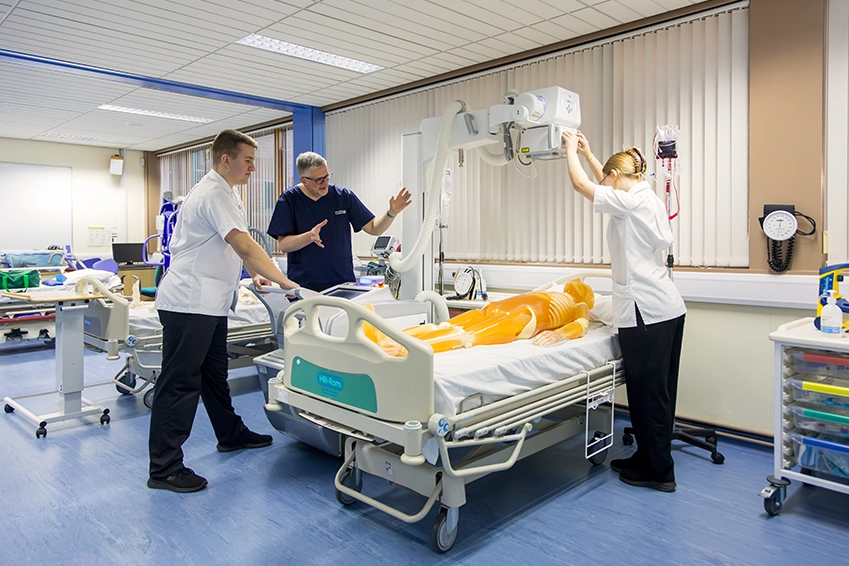Assistant Practitioner (Health) Radiography Apprenticeship
The Assistant Practitioner (Health) Radiography apprenticeship has been developed in collaboration with employers to address workforce demands and ensure a skilled pipeline of professionals. The programme content has been strategically aligned with industry standards, including those set by the Society of Radiographers, to facilitate a seamless transition for apprentices onto the one-year Diagnostic Radiography top-up programme to become registered radiographers. Apprentices within a range of clinical settings such as CT, MRI benefit from the opportunity to apply their learning directly to their clinical environment. Additionally, the cohort-based structure fosters collaboration, enabling apprentices to exchange insights, share best practices, and explore key areas of professional interest, ultimately enhancing their expertise and contribution to the field.

This apprenticeship programme aims to enable support workers in radiography to work as an Assistant Practitioner.
Modules:
In year 1, the modules teach apprentices the basics of professionalism, scope of practice, holistic patient care, and the research base for their profession. Students also learn radiation protection, basic scientific principles of medical imaging, an understanding of relevant legislation, health informatics and the operation and application of a range of ionising radiation and non-ionising technologies.
Year 2 contains modules on leadership, management, and quality, the patient’s journey, anatomy and physiology and its application to a range of conditions, digital medical imaging in radiography, advanced health informatics, and an understanding of legislation.
In both years, apprentices undertake a diverse range of assessments which are relevant to both the module being studied and their clinical area.''
- To be able to work as an Assistant Practitioner (Health) within their own field and scope of practice.
- To be able to work within the limits of their competence and authority to provide high quality, evidence-based clinical, diagnostic or therapeutic care and holistic support as part of the wider healthcare team.
- To be able to communicate effectively with a wide range of people whilst maintaining a safe and healthy working environment.
- To be able to learn whilst staying in their own clinical area for two years and gain in depth experience in their chosen field of practice.
- To be able to develop clinical and professional skills to enable them to fully integrate and support registered healthcare practitioners and provide excellent patient care.
Wanting to recruit an apprentice or sponsor an existing employee to complete an apprenticeship? This guide will help you and your business with the steps you need to take to recruit and employ an apprentice and start them on their training course.
- Applicants need to be working for a medical imaging/radiography service provider offering diagnostic radiography services for the NHS or independent sector this could include X-ray, CT, CT-Pet, MRI, Nuclear Medicine, and Interventional Radiography services.
- Candidates need to be working for 30 hours per week.
- Candidates will need to have achieved GCSE English Language and Maths at C/4 or above
- (Functional Skills Level 2 also accepted), and a NVQ Level 3 or equivalent.
Our employers say
-
![Maria Reynolds]()
UoC have engaged with employers when redesigning the Assistant Practitioner apprenticeship to ensure it met our requirements for our workforce as well as being accessible regardless of the apprentice location.
Maria Reynolds
Imaging Practice & Education Lead, University Hospitals Birmingham
-
![Kate Wick]()
From the initial enquiry stages the University of Cumbria has been a delight to work with, no request has been too small and all dealt with in a timely and professional manner.
Kate Wick
Apprenticeships Engagement Partner at Thames Water
-
![Andy Vaughan]()
I have worked closely with the University of Cumbria for almost a decade, firstly when they delivered the BSc in Project Management to our apprentices and then during the development, and subsequent implementation of the Level 6 Trailblazer standard in project management. I can comfortably say that they are exceptional at what they do.
Andy Vaughan
Apprentice/Graduate Scheme Manager at Sellafield






